When raising your own chickens for meat, there are many factors to consider. Breeds, food, shelter, cleaning and butchering. Learn what we discovered during our first year of raising meat birds.
Five years ago, if you had told me we’d be raising our own chickens for meat, I am not sure if I would believe you. Yeah, my family already had a couple dozen layers that gave us plenty of farm fresh eggs, but meat birds? That’s a whole different ball game.
Well here we are. Raising 150 meat birds for our friends and family. We started early spring with the first set and are now just days away from processing the third batch of birds. While I can’t say we are meat chicken experts, since this is our first official year raising roasters, I did want to share our experiences of what worked and what didn’t.
What Type of Meat Bird Should You Choose
In the world of meat chickens, there are basically two categories to choose from, dual purpose or heritage breeds and cornish crosses. The white cornish cross is a hybrid that is specifically bred for fast growth rates. While this might sound ideal, there are a few drawbacks that can occur with these hybrid chickens. Stench, excessive eating and leg problems from quick weight gain are just a few concerns.
The second type of broiler is a dual purpose or heritage bird. A dual purpose chicken means that they are great for meat as well as laying eggs. A barred plymouth rock is a good example of this. A heritage variety, such as the red rangers, do not grow as quickly as the cornish cross but they tend to be quite healthy and have very flavorful meat. Red rangers can be processed in 9-11 weeks.
While both breeds are a great option for raising meat chickens, we ended up selecting the rainbow rangers. They are perfect for free range or pastured-poultry homesteads.
Where to Buy Chickens From
There are many small and large hatcheries across the US that will sell you broilers. We have been happy with the chicks we purchased from Meyer Hatchery. When selecting a breeder to purchase from, do your research. Consider experience, reviews, cost and shipping types such as overnight or pick up. With nearly 40 years of experience, Meyer Hatchery rules the roost when it comes to their knowledge on chickens. Who knew that you couldn’t cross a male and female ranger to get more ranger broilers? Well Meyer’s does.
How to Take Care of Meat Chickens
Even though meat birds are a lot of work to take care of, they do not require many supplies. Food, shelter and a clean area to reside in is all they need.
Food
Broilers tend to be much “piggier” than layers. They can easily go through 2-3 bags of food per week within their last few weeks before processing. We generally feed our 75 meat birds three to four times a day. They will receive feed (we get ours from Kraut Creek), water and grit. As they grow and mature, we also give them treats such as scrapes from the garden or leftover food from the night before. They are particularly fond of noodles, anything with protein and veggies with large seeds, like watermelon.
Shelter
Initially when the baby chicks arrived, they stayed in a stock tank with a heat lamp to keep them safe and warm. As they grew, their world expanded. First, a room in the barn. Then a fenced in space next to the barn. And finally, into a mobile A-Frame chicken tractor. (Learn how we built a movable chicken shelter here.)
Each and every day we moved the tractor so that the birds had new grass to lay on. The chicken tractor we built was used for sleeping and shelter from harsh weather and predators. In addition to the shelter, they also had a large space to peck and explore within an electrified enclosure.
Part way through the summer, we made some adjustments to the design of the chicken tractor. My husband and father added another couple of feet to the bottom of the frame to give us more headspace when we had to get into the tractor and grab a chicken or feed them.
No one likes to bonk their head on a solid 2 by 4.
The additional height proved to be a success until we discovered that the extra weight on the chicken tractor made it difficult to pull around. I foresee a few more adjustments to the shelter before we raise more meat birds next year.
Another thing we came across while raising broilers was the sudden shift in weather. There were a few times in the fall when the weather became so intense, either very cold or flooded from excessive rain. Due to this, we had to get inventive. Canvas was added to the sides of the shelter to help keep the birds dry and warm. From the looks of the green and yellow shelter, it appeared like the chickens were headed to camp – Camp Peeps!
Cleaning
Meat birds poop a lot! I will spare you the details. Due to this they need need fresh bedding every day. If they are kept in a barn, putting down fresh straw or cleaning out their room will help keep their home dry and stink-free. Or if you have enough land to pull a mobile shelter around, the chore of cleaning is much less work. Not only will they have fresh grass to graze but they’ll be fertilizing the pasture too.
Butchering Chickens
Our rainbow rangers were ready to be processed at about 11 weeks or so. After butchering they weighed an average of 5 lbs each.
This may be a controversial topic in the homesteading community but we will be the first to admit that this year we did not butcher our own chickens. The reason being we were a bit hesitant about killing our chickens. And we did not have the equipment to butcher the chicken. After looking into what tools were required for butchering, we learned it was a bit of an investment. Rather then do the deed ourselves, we had a local gal get the job done. Perhaps in the future, we will feel differently.
If you have raised your own chickens and want to butcher them yourself, this video from Joel Salatin and this article from Jill Winger on “how to butcher a chicken” are packed full of valuable information.
How to Cook Homegrown Chicken
This post contains affiliate links, which means I make a small commission at no extra cost to you. In any case, I only link to products we actually use on our homestead and that I believe can truly benefit to you. See my full disclosure here.
It’s a great feeling when you look into your deep freeze and see dozens of homegrown chickens that you know were treated fairly, fed well and not soaked in chemicals when processed.
My favorite way to cook a roaster is to place the entire bird in a granite ware roosting pan with some veggies and seasoning. Cook it for 1.5 – 2 hours in your oven at 375° and voila, we have a delicious home cooked meal that did not require much effort.
Afterwards we will take the bones and make chicken stock or bone broth out of them. Talk about nutritious!
You can also cut your chicken into pieces – 2 breasts, 2 thighs, 2 legs and 2 wings. These can be used in recipes like chicken sheet pan suppers or cast iron chicken and potatoes.
Growing meat birds was quite the learning experience this past year. While there were a few times things didn’t work out as planned, we couldn’t be more thankful for the abundance of meat God has provided us!
Do you raise animals for meat on your property?

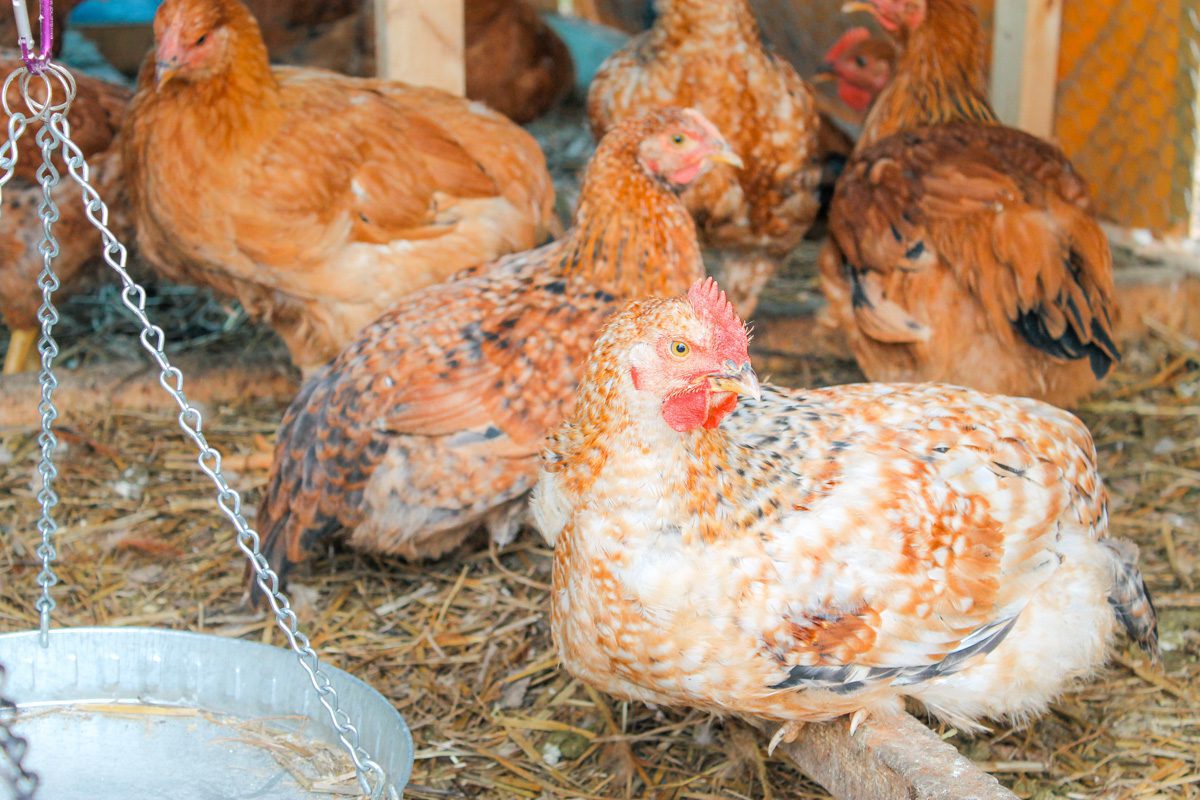
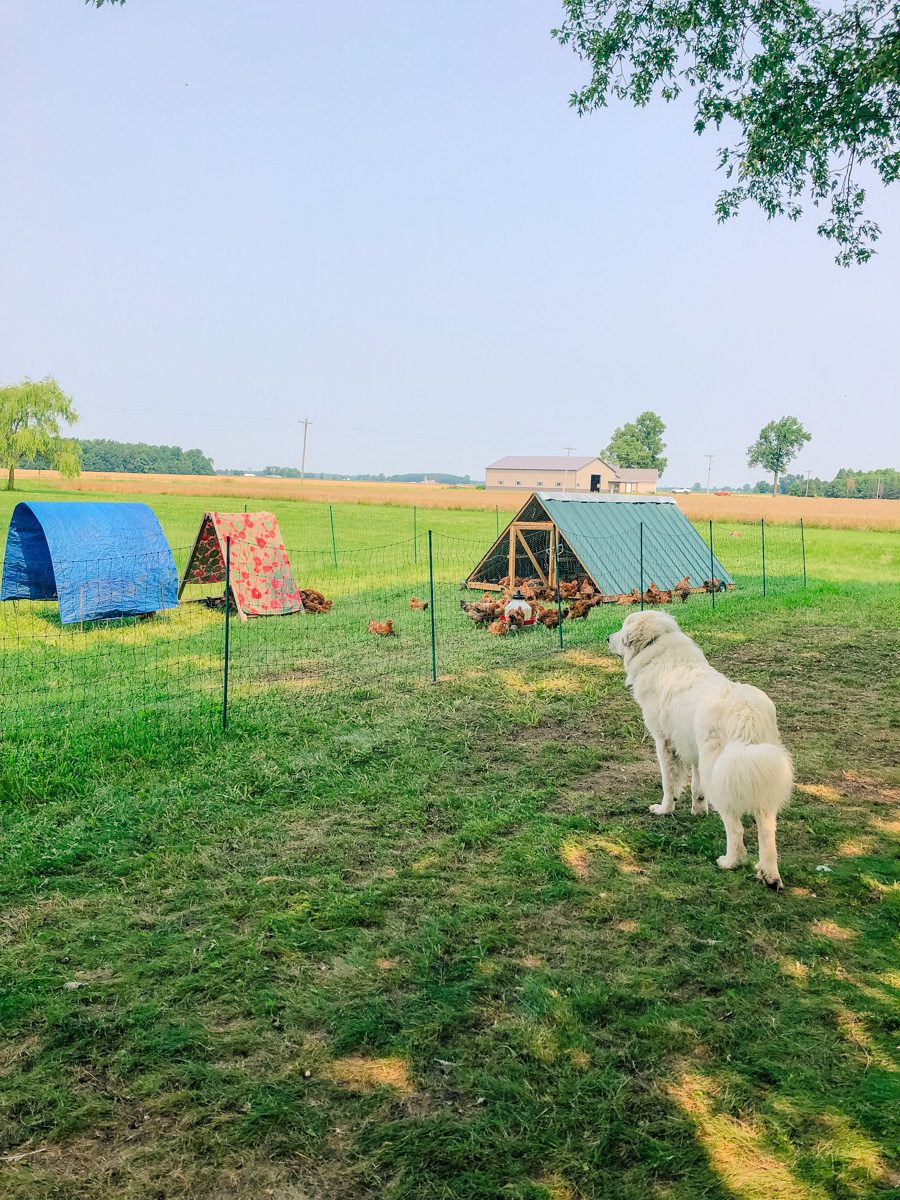
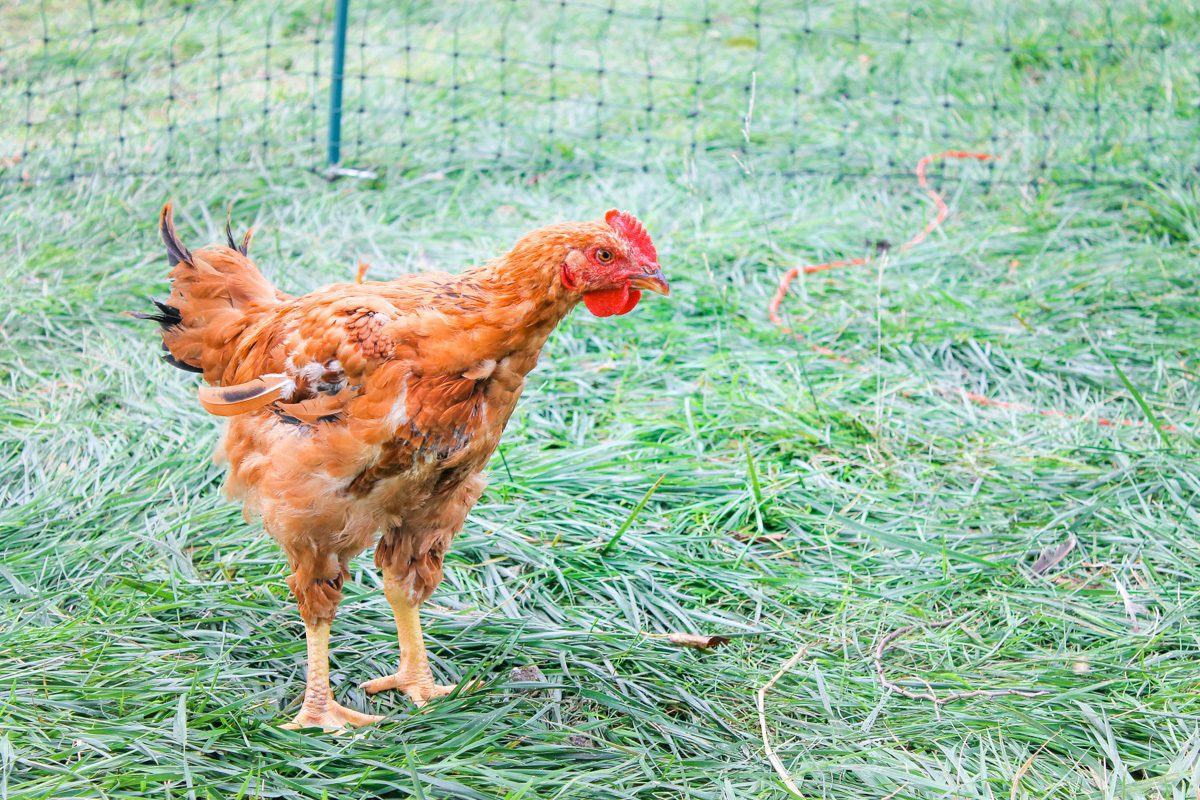
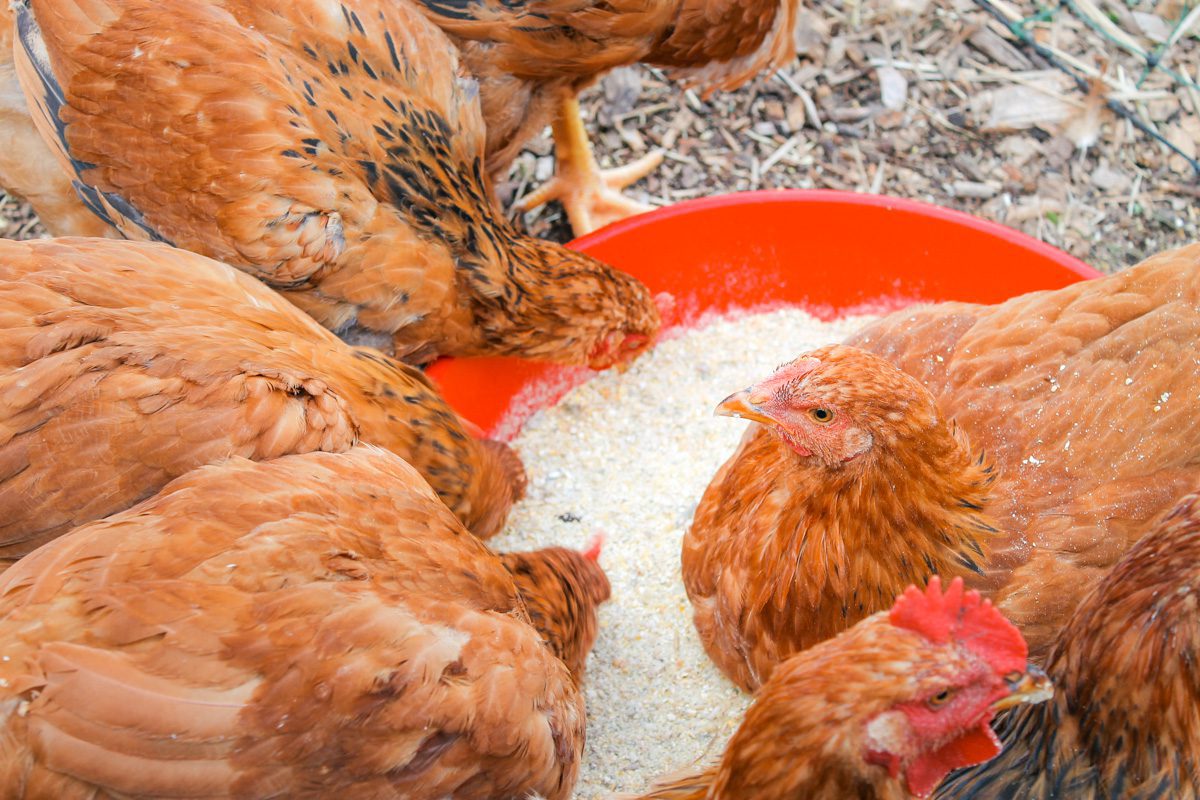
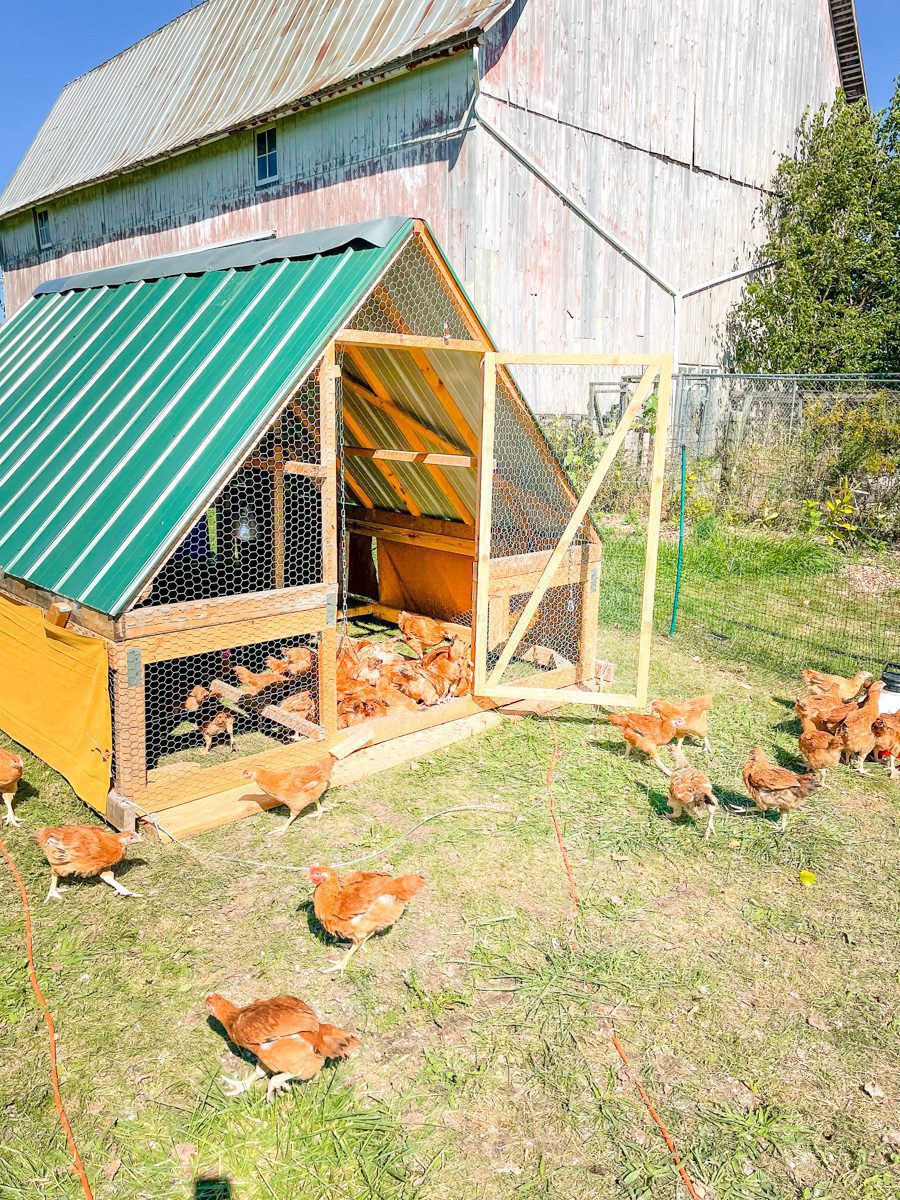
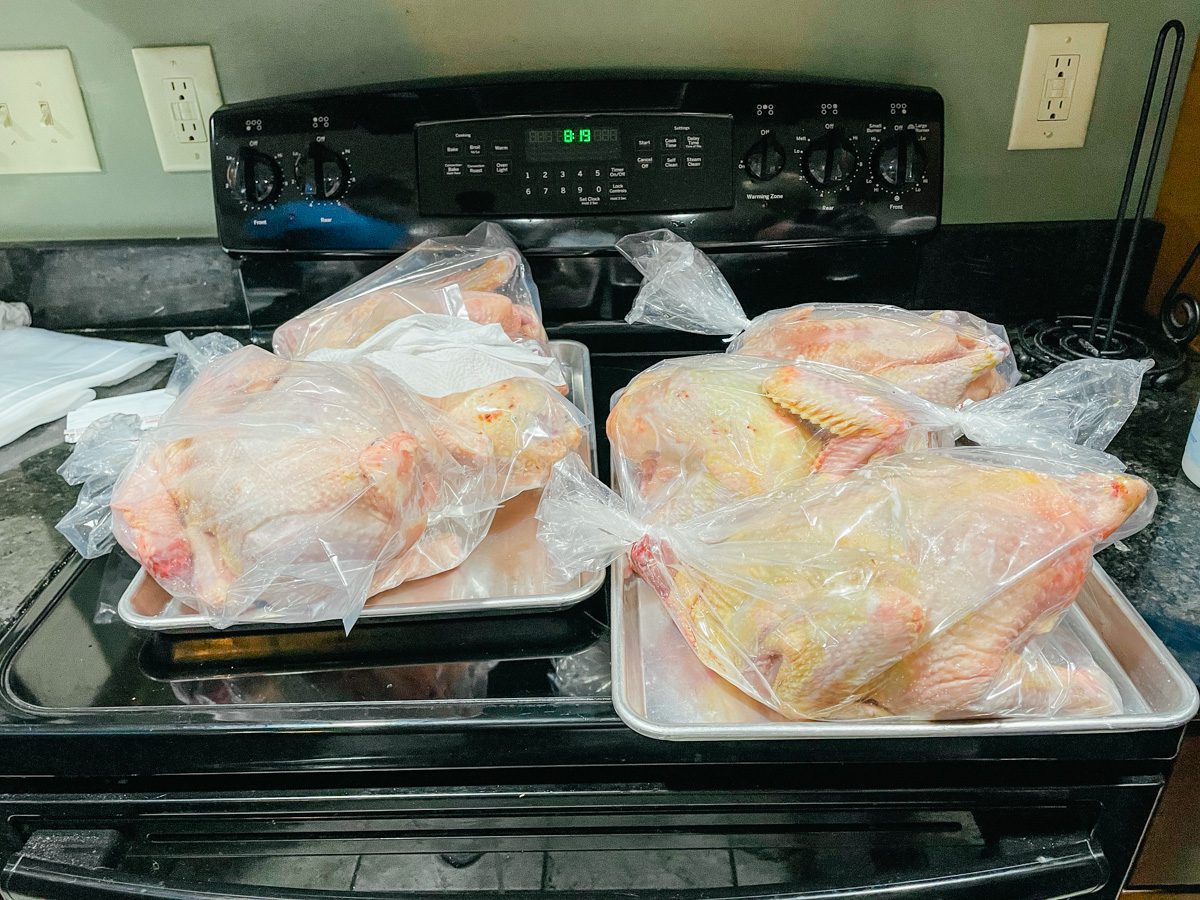
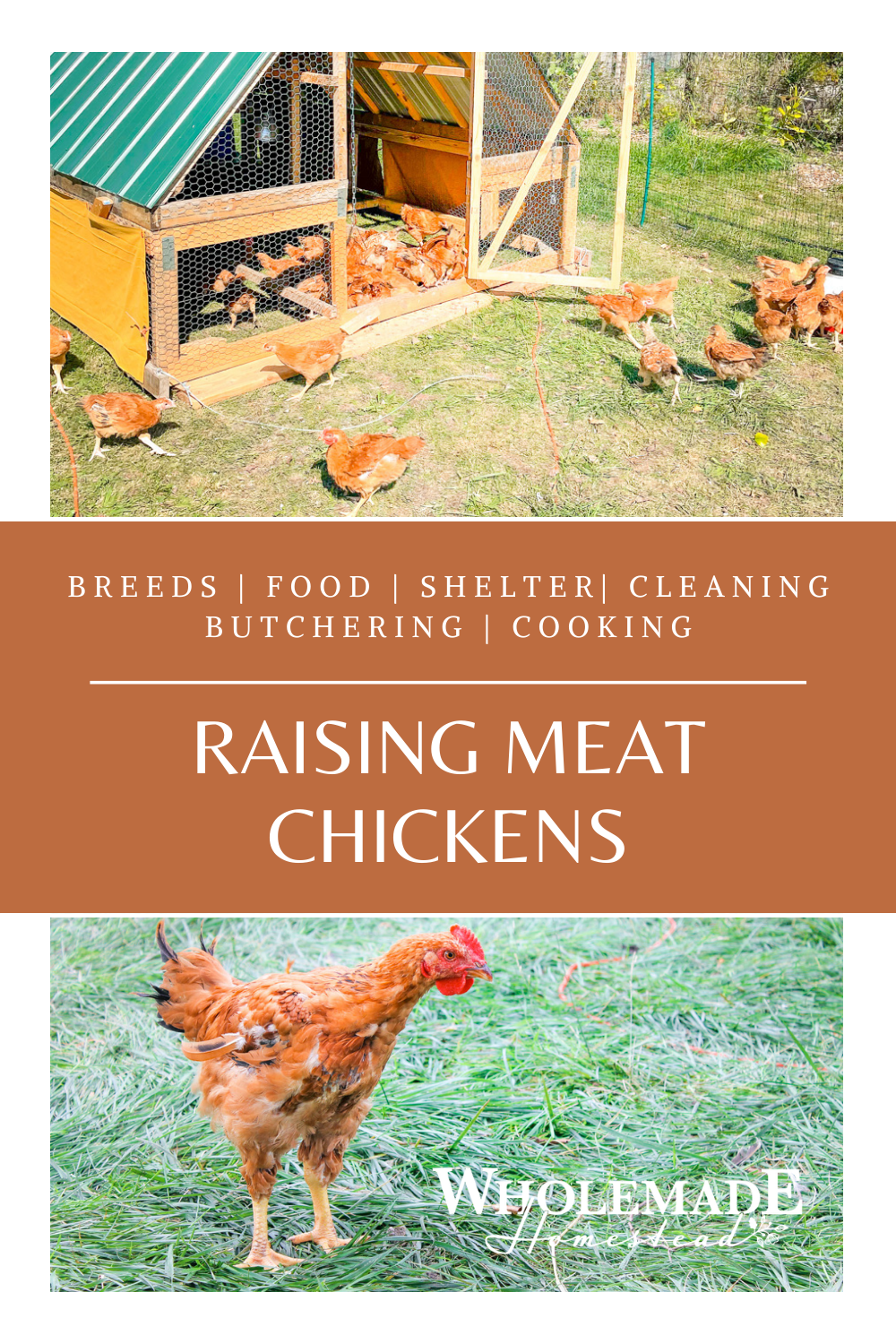






Thank you. Please tell me if you find small eggs inside the hens when butchering them & what you do with them.